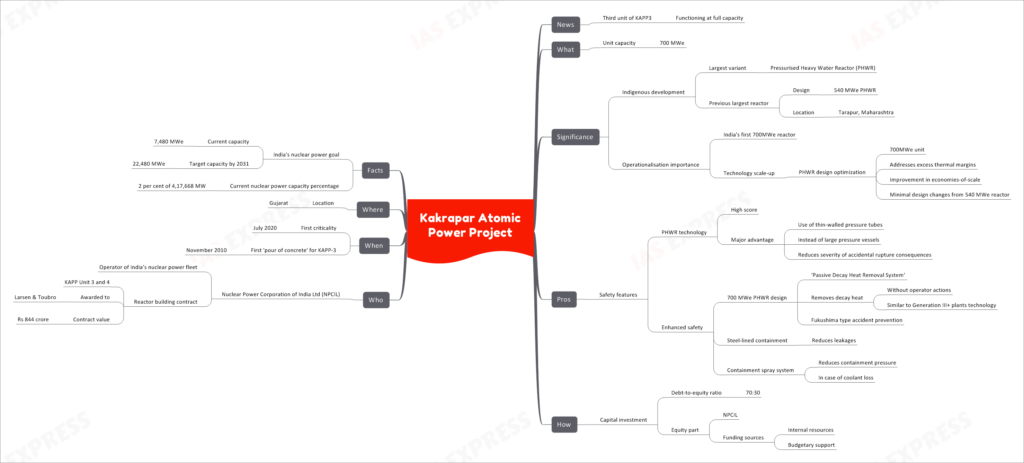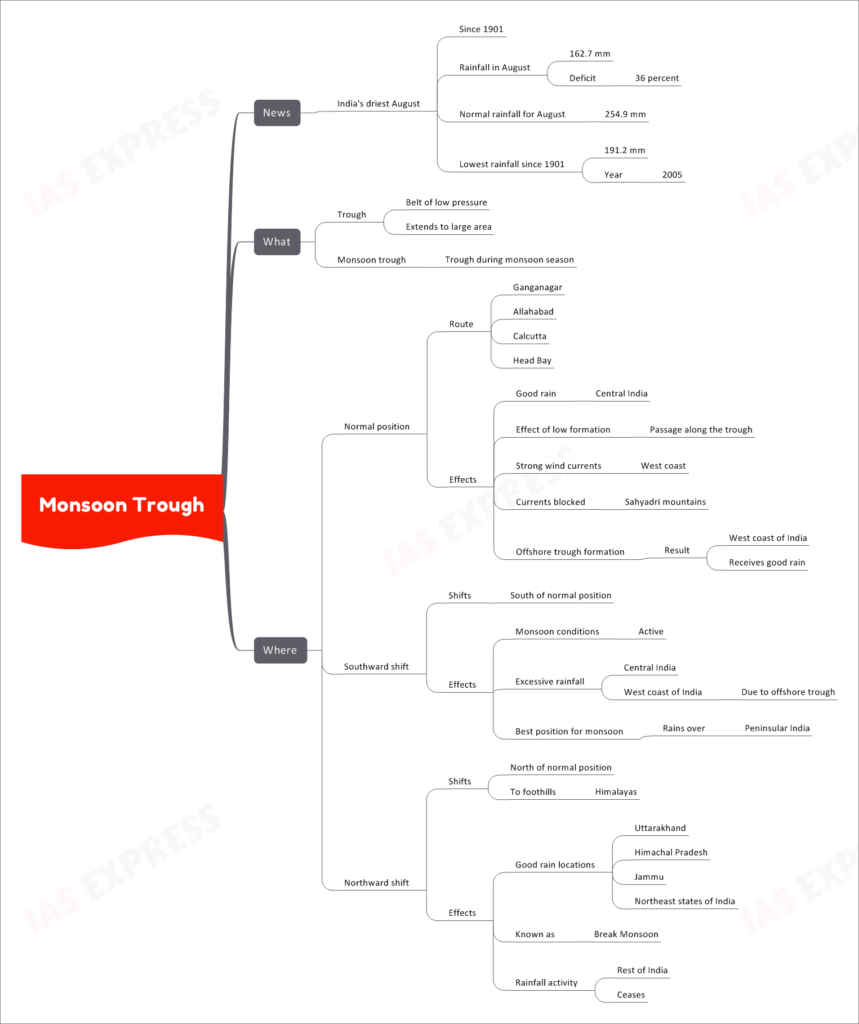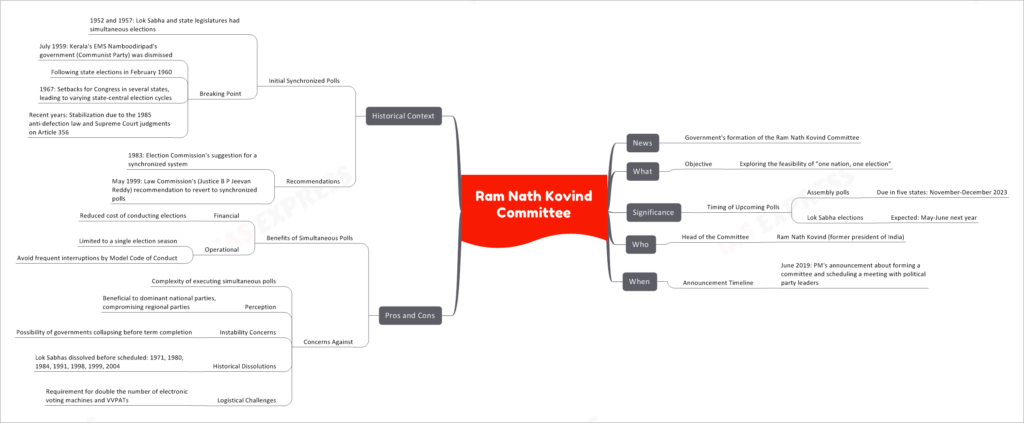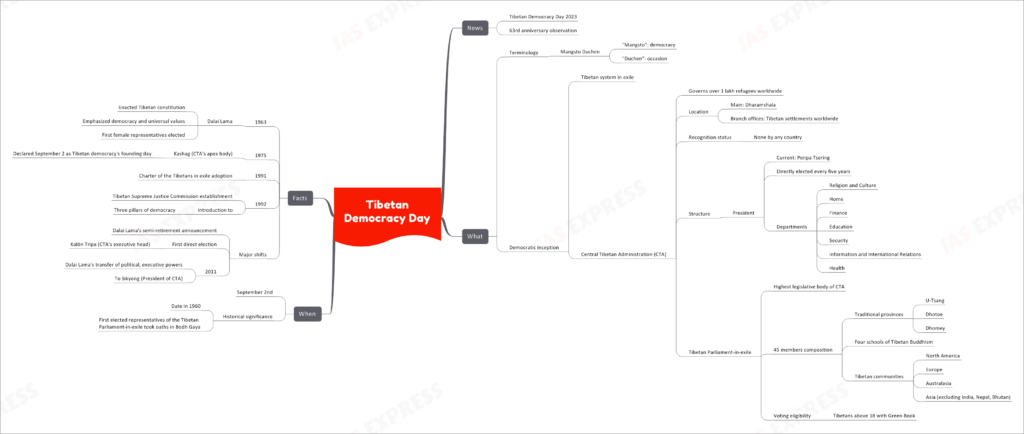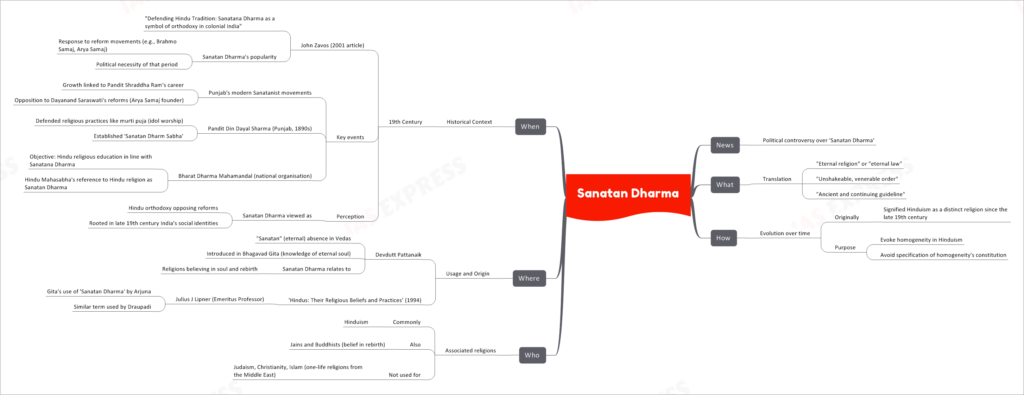[Newsbits] 04.09.2023

Kakrapar Atomic Power Project
In a recent development, the third unit of the Kakrapar Atomic Power Project (KAPP3) is now operating at full capacity. This achievement is a significant step towards India's ambitious nuclear power goals.
Unveiling KAPP: Third Unit at Full Capacity
Unit Capacity
- The third unit of KAPP, known as KAPP3, has a capacity of 700 MWe (MegaWatt electrical).
The Significance of KAPP3
Indigenous Development
- KAPP3 is the largest variant of the Pressurized Heavy Water Reactor (PHWR) design.
- It surpasses the previous largest reactor, a 540 MWe PHWR in Tarapur, Maharashtra.
Operationalization Importance
- KAPP3 is India's first 700 MWe reactor, showcasing a significant technology scale-up.
- The PHWR design has been optimized for the 700 MWe unit, addressing excess thermal margins and benefiting from economies of scale.
Safety Features and Advantages
PHWR Technology
- PHWR technology boasts a high safety score.
- Notably, it employs thin-walled pressure tubes instead of large pressure vessels, mitigating the consequences of accidental ruptures.
Enhanced Safety Design
- The 700 MWe PHWR design incorporates a 'Passive Decay Heat Removal System.'
- This system removes decay heat without operator intervention, akin to technology used in Generation III+ plants, aiming to prevent incidents similar to Fukushima.
Structural Safety Measures
- Steel-lined containment reduces leakages.
- A containment spray system reduces containment pressure during coolant loss scenarios.
The Journey of KAPP: Financing and Execution
Capital Investment
- The project is financed with a 70:30 debt-to-equity ratio.
- Equity partners include the Nuclear Power Corporation of India Ltd (NPCIL).
Execution Partner
- The reactor building contract for KAPP Units 3 and 4 was awarded to Larsen & Toubro at a contract value of Rs 844 crore.
KAPP's Timeline and Location
Milestones
- KAPP-3 achieved its first criticality in July 2020.
- The first 'pour of concrete' for KAPP-3 took place in November 2010.
Location
- KAPP is situated in the state of Gujarat, India.
India's Nuclear Power Vision
Current and Target Capacity
- India's current nuclear power capacity stands at 7,480 MWe.
- The country aims to achieve a capacity of 22,480 MWe by 2031.
Global Nuclear Contribution
- India's current nuclear capacity contributes 2 percent to the global power generation capacity of 4,17,668 MW.
Monsoon Trough
Recent news highlights the unusually dry August in India, marking the driest since 1901, with only 162.7 mm of rainfall and a deficit of 36 percent compared to the average August rainfall of 254.9 mm.
Understanding the Monsoon Trough
Trough: Belt of Low Pressure
- A trough signifies an elongated belt of low atmospheric pressure.
- It extends over a significant area and affects local weather conditions.
Monsoon Trough: Influence during Monsoon Season
- The Monsoon Trough is a specific type of trough that forms during the monsoon season.
- It plays a crucial role in dictating the movement of the monsoon and rainfall patterns in India.
Positional Variations and Their Effects
Normal Position of the Trough
- Route: Extends from Ganganagar to Allahabad, then from Calcutta to Head Bay.
- Effects: This position brings adequate rainfall to Central India. The trough's movement contributes to the development of strong wind currents along the west coast, blocked by the Sahyadri mountains. This leads to the formation of an offshore trough, bringing ample rainfall to the western coast.
Southward Shift of the Trough
- Description: When the trough shifts south of its typical position.
- Effects: Monsoon conditions intensify, resulting in excessive rainfall for Central India and the west coast, particularly due to the offshore trough. This positioning fosters the best conditions for the monsoon, spreading rainfall across Peninsular India.
Northward Shift of the Trough
- Description: The trough moves north of its standard position, extending towards the foothills of the Himalayas.
- Effects: Regions like Uttarakhand, Himachal Pradesh, Jammu, and the Northeastern states experience heavy rainfall. This situation is called the "Break Monsoon," characterized by reduced rainfall in the rest of India.
Implications for Rainfall Distribution
Recent Dry August in India
- August 2023 recorded significantly dry conditions, with a rainfall deficit of 36 percent compared to the average August rainfall since 1901.
Ram Nath Kovind Committee
- The government has recently formed the Ram Nath Kovind Committee.
What is the Objective of the Committee?
- Objective: The primary goal of the committee is to explore the feasibility of implementing "one nation, one election."
The Significance of Timing for Upcoming Polls
- Assembly Polls: Five states are due to hold assembly polls in November-December 2023.
- Lok Sabha Elections: The Lok Sabha elections are expected to take place in May-June of the following year.
Who Heads the Committee?
- Head of the Committee: The committee is led by Ram Nath Kovind, the former President of India.
When Was the Committee Announced?
- Announcement Timeline: The committee was announced in June 2019, following the Prime Minister's announcement and a scheduled meeting with political party leaders.
Pros and Cons of Simultaneous Polls
Benefits of Simultaneous Polls
- Financial: Simultaneous polls could lead to a reduced cost of conducting elections.
- Operational: Conducting elections during a single season could minimize interruptions caused by the Model Code of Conduct.
Concerns Against Simultaneous Polls
- Complexity: Executing simultaneous polls on a national scale is a complex undertaking.
- Perception: Some argue that this system may benefit dominant national parties at the expense of regional parties.
- Instability Concerns: There is a concern that governments could collapse before completing their terms.
- Historical Dissolutions: In the past, Lok Sabhas have been dissolved before their scheduled terms in 1971, 1980, 1984, 1991, 1998, 1999, and 2004.
- Logistical Challenges: Implementing simultaneous polls would require double the number of electronic voting machines and VVPATs.
Historical Context of Synchronized Polls
- Initial Synchronized Polls: In 1952 and 1957, Lok Sabha and state legislatures held simultaneous elections.
- Breaking Point: The system faced challenges, notably in July 1959 when Kerala's EMS Namboodiripad's government (Communist Party) was dismissed after state elections in February 1960. This led to varying state-central election cycles.
- Stabilization: In recent years, the electoral system has stabilized due to the implementation of the 1985 anti-defection law and Supreme Court judgments on Article 356.
Recommendations for Synchronized Polls
- 1983: The Election Commission suggested a synchronized election system.
- May 1999: The Law Commission, led by Justice B. P. Jeevan Reddy, recommended a return to synchronized polls.
The formation of the Ram Nath Kovind Committee marks a significant step in reevaluating the feasibility and implications of "one nation, one election" in the Indian electoral landscape. It addresses both the potential advantages and challenges associated with this ambitious electoral reform.
Tibetan Democracy Day
- Tibetan Democracy Day 2023: The recent celebration of Tibetan Democracy Day marks its 63rd anniversary.
What is Tibetan Democracy Day?
Terminology
- Mangsto Duchen: Tibetan Democracy Day, known as "Mangsto Duchen" in Tibetan, translates to "Mangsto" (democracy) and "Duchen" (occasion).
Democratic Inception
- The Tibetan democratic system in exile is centered around the Central Tibetan Administration (CTA), which governs over one lakh refugees worldwide.
- Location: The main headquarters of the CTA is in Dharamshala, India, with branch offices in Tibetan settlements worldwide.
- Recognition Status: The CTA is not officially recognized by any country.
Structure of the CTA
- President: The current President is Penpa Tsering, who is directly elected every five years.
- Departments: The CTA operates various departments, including Religion and Culture, Home, Finance, Education, Security, Information and International Relations, and Health.
- Tibetan Parliament-in-exile: This body serves as the highest legislative authority of the CTA and is composed of 45 members representing traditional provinces, schools of Tibetan Buddhism, and Tibetan communities worldwide.
- Voting Eligibility: Eligibility to vote in Tibetan Parliament-in-exile elections is granted to Tibetans above the age of 18 with a Green Book.
When is Tibetan Democracy Day Celebrated?
- Date: Tibetan Democracy Day is observed on September 2nd each year.
- Historical Significance: On this day in 1960, the first elected representatives of the Tibetan Parliament-in-exile took their oaths in Bodh Gaya.
Key Historical Facts
- 1963: The Dalai Lama enacted the Tibetan constitution, emphasizing democratic principles and universal values, and witnessed the election of the first female representatives.
- 1975: The Kashag, the apex body of the CTA, declared September 2 as the founding day of Tibetan democracy.
- 1991: The Charter of the Tibetans in exile was adopted.
- 1992: The Tibetan Supreme Justice Commission was established, introducing the three pillars of democracy.
- Major Shifts: Notable changes include the Dalai Lama's semi-retirement announcement, the first direct election of the Kalön Tripa (CTA's executive head), and in 2011, the transfer of political and executive powers to the Sikyong, the President of the CTA.
Pirola
- Yale Medicine Review Article: A recent article in the Yale Medicine Review sheds light on the Pirola variant.
- Circulation of Pirola Variant: The variant is currently in circulation.
What is Pirola Variant?
Type
- Respiratory Virus: Pirola is a respiratory virus.
- Coronavirus Variant BA.2.86: It belongs to the family of coronavirus variants and is specifically identified as BA.2.86.
Features
- Mutations: Pirola variant exhibits more than 30 mutations on its spike protein.
- Comparison with XBB.1.5: It is noteworthy for its spike protein mutations, which can be compared to the previous dominant Omicron strain in the US (XBB.1.5).
- Spike Protein Function: The spike protein is crucial for the entry of the coronavirus into human cells.
Significance of Pirola Variant
Mutation Concerns
- High Mutation Count: The Pirola variant's spike protein mutations raise concerns due to their significant number.
- Comparison with Delta and Omicron: The mutation difference between Pirola and its predecessors, such as Delta and Omicron, is worth studying.
- Shifts in Mutations: The variant showcases either massive changes or a gradual evolution in its genetic makeup, as observed in the Delta and Omicron variants.
- Current Health Impact: As of now, there have been no reported deaths attributed to the Pirola variant.
Where has it been Reported?
- The Pirola variant has been reported in several locations, including the USA, UK, Israel, Denmark, and South Africa.
Sanatan Dharma
In recent news, the term "Sanatan Dharma" has been at the center of a political controversy, raising questions about its significance and implications.
What is Sanatan Dharma?
Translation
- "Eternal Religion" or "Eternal Law": Sanatan Dharma can be translated to mean the "eternal religion" or "eternal law," emphasizing its timeless nature.
- "Unshakeable, Venerable Order": It also conveys the idea of an "unshakeable, venerable order" that transcends time and space.
- "Ancient and Continuing Guideline": Another translation highlights it as an "ancient and continuing guideline," suggesting its enduring relevance.
How has Sanatan Dharma Evolved Over Time?
Originally
- Sanatan Dharma originally signified Hinduism as a distinct religion since the late 19th century.
- Its purpose was to evoke homogeneity in Hinduism and avoid specifying the constitution of that homogeneity.
Who is Associated with Sanatan Dharma?
Commonly
- Commonly associated with Hinduism, Sanatan Dharma has deep roots in the Hindu faith.
- It also extends its influence to Jains and Buddhists, primarily due to their shared belief in rebirth.
- However, it is not used to describe one-life religions from the Middle East, such as Judaism, Christianity, and Islam.
Where Did Sanatan Dharma Find Its Usage and Origin?
- Devdutt Pattanaik, a renowned scholar, notes that the term "Sanatan" (eternal) is absent in the Vedas but was introduced in the Bhagavad Gita, emphasizing the knowledge of the eternal soul.
- Sanatan Dharma relates to religions that believe in the soul's eternity and the concept of rebirth.
- In 'Hindus: Their Religious Beliefs and Practices’ (1994), Julius J Lipner, an Emeritus Professor, points to the Gita's use of 'Sanatan Dharma' by Arjuna, and a similar term is used by Draupadi.
When Did Sanatan Dharma Gain Historical Significance?
19th Century
- In the 19th century, Sanatan Dharma gained prominence in response to reform movements like the Brahmo Samaj and Arya Samaj.
- John Zavos, in his 2001 article, highlights its role as a symbol of orthodoxy in colonial India, emphasizing its popularity during this period.
- Key events include the growth of Punjab's modern Sanatanist movements, linked to Pandit Shraddha Ram's career and their opposition to Dayanand Saraswati's reforms, the founder of Arya Samaj.
- Pandit Din Dayal Sharma in Punjab during the 1890s defended religious practices like murti puja (idol worship) and established the 'Sanatan Dharm Sabha.'
- The Bharat Dharma Mahamandal was formed with the objective of promoting Hindu religious education in line with Sanatana Dharma principles, and the Hindu Mahasabha referred to Hindu religion as Sanatan Dharma during this time.
How is Sanatan Dharma Perceived?
- Sanatan Dharma is often viewed as representing Hindu orthodoxy, opposing the reforms advocated by various movements.
- It is rooted in the social identities of late 19th-century India and served as a response to the political necessities of that period.
